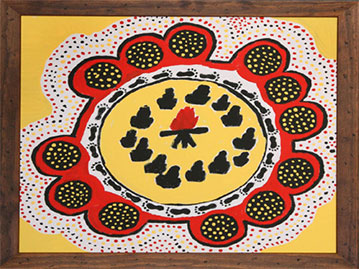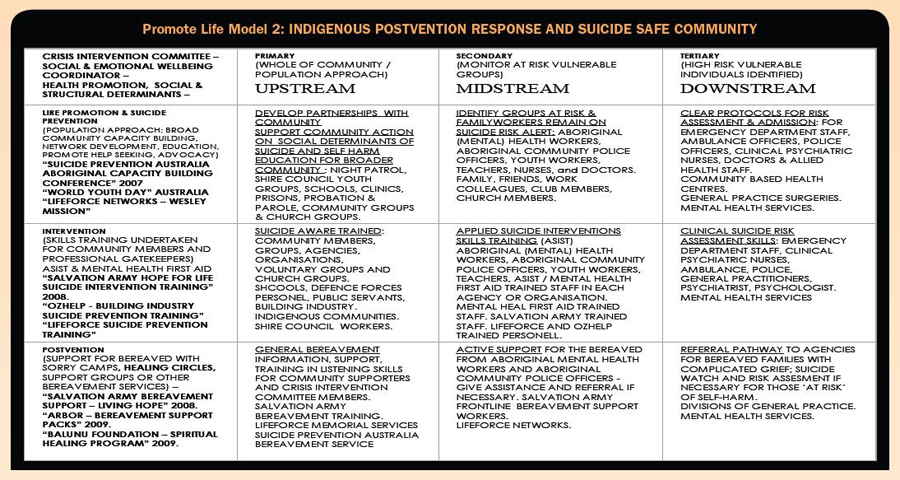Bereavement
Indigenous Suicide Containment Model
The "Indigenous Postvention Response to Contain Suicide Clusters and Promote a Suicide Safe Community" is a model of response and containment which hinges on the cooperation of the Coroner's Office, Mental Health Program and Hospital Emergency Departments within legislative constraints.
One of the recommendations of the Commonwealth's response to the Hidden Toll: Suicide in Australia 2010 report, was to support the timely distribution of suicide data to allow early notification of suicides for postvention responses. It is necessary to detect emerging clusters of attempted or completed suicide within a community setting, which if not contained can result in suicide hotspots and "echo clusters". An established postvention community response plan is also needed prior to any occurrence of suicidal activity, to ensure timely, efficient and targeted responses and to avoid imitation and contagion.
The "Indigenous Suicide Postvention Response and Containment" model underpins the activities of response agencies and networks for the mobilisation of community postvention and intervention efforts after a completed suicide or other suicidal activity, identifying imitation, and thus preventing suicide contagion and suicide clusters.
> Read more about Indigenous Grief & Loss
> Read more about the Postvention Model
Articles
> "Echo Clusters" - Are They a Unique Phenomenon of Indigenous Attempted and Completed Suicide?

A Healing Circle to express grief in safety is often led by Clergy or Indigenous Pastoral Elder. Grief can be isolating, so bereavement pastoral support and grief counsellors should begin the healing process by visiting the bereaved family as soon after the tragedy as possible.
